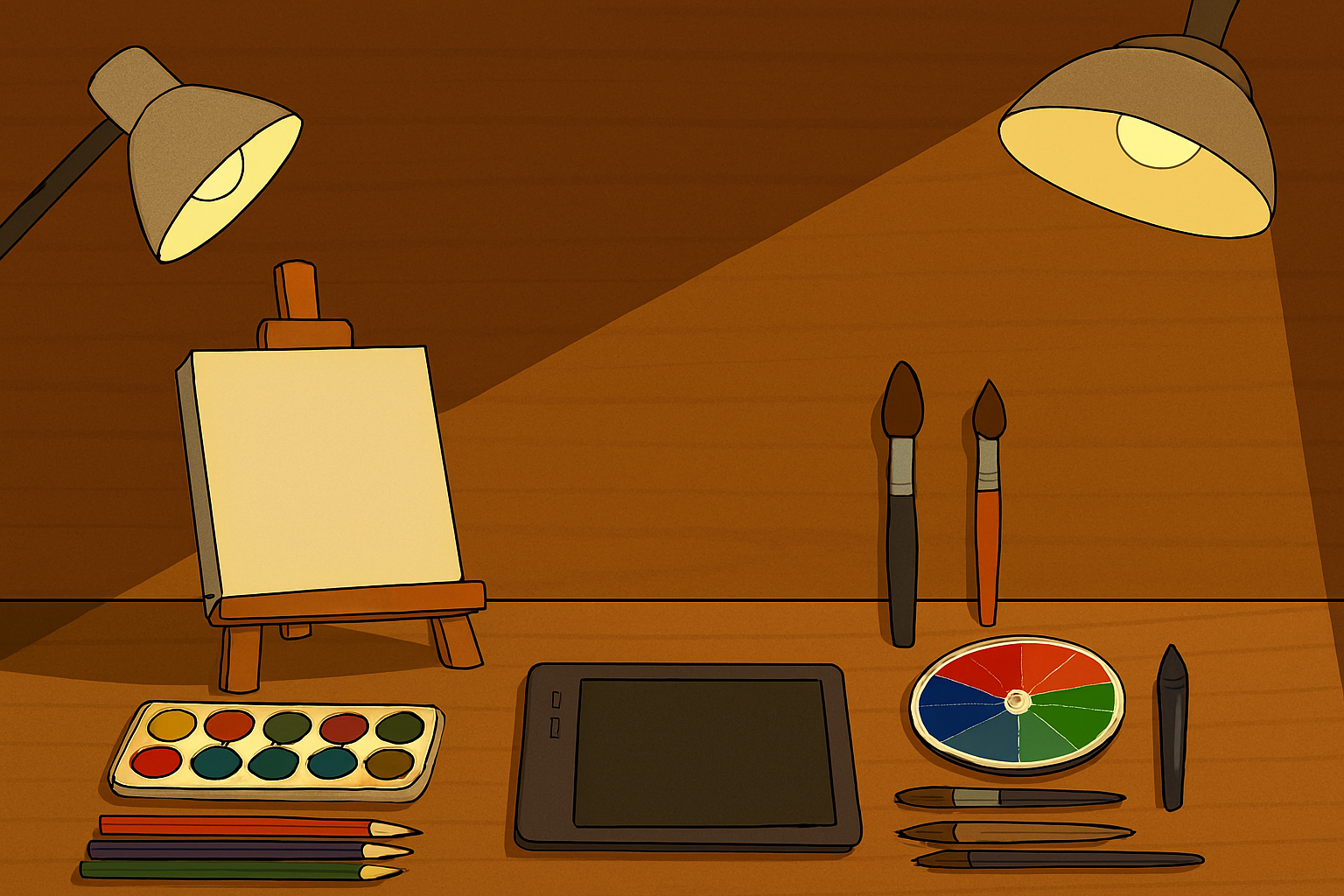Good lighting is one of the most important — yet often overlooked — elements in an artist’s workspace. The right light can enhance color accuracy, reduce eye strain, and create a comfortable environment for long creative sessions. Whether you’re painting, drawing, sculpting, or working digitally, understanding how to choose the best lighting will help you see your work in its truest form.
Understanding the Importance of Proper Lighting
Lighting affects how you perceive colors, shapes, and details. Poor lighting can distort hues, create harsh shadows, and even cause fatigue over time. For artists, this can mean the difference between a piece that looks perfect in the studio and one that appears completely different in natural daylight.
- Accurate color perception is essential for professional results.
- Balanced lighting reduces glare and eye strain.
- Consistent light conditions help maintain workflow and focus.
- Proper lighting can enhance mood and creativity.
- The right setup supports both traditional and digital art practices.
By prioritizing proper lighting, you ensure that your creative decisions are based on accurate visual information, not distorted by poor illumination.
Choosing the Right Color Temperature
Color temperature, measured in Kelvin (K), determines whether light appears warm, neutral, or cool. For artists, this choice directly impacts how colors are perceived.
- Warm light (2700K–3000K) – Cozy and inviting but can distort cool tones.
- Neutral white light (4000K–4500K) – Balanced and versatile for most art forms.
- Daylight (5000K–6500K) – Closest to natural sunlight, ideal for color accuracy.
- Adjustable color temperature lamps – Allow switching between warm and cool tones.
- Avoid overly yellow or blue lighting for critical color work.
Selecting a daylight-balanced light source (around 5000K) is often the best choice for artists who need consistent, true-to-life color rendering.
Understanding Light Intensity and Brightness
The brightness of your lighting setup affects how well you can see fine details and subtle color variations. Too dim, and you’ll strain your eyes; too bright, and you risk glare.
- Lumens – Measure total light output; higher lumens mean brighter light.
- Adjustable brightness – Lets you adapt to different tasks and times of day.
- Task lighting – Focused light for detailed work.
- Ambient lighting – General illumination for the whole studio.
- Avoid harsh, direct beams that create strong shadows.
Balancing ambient and task lighting ensures you have enough brightness for precision work without overwhelming your eyes.
Types of Lighting for Art Studios
Different light sources have unique qualities that can benefit or hinder your work. Understanding the options helps you choose the best fit for your medium and style.
- LED lights – Energy-efficient, long-lasting, and available in various color temperatures.
- Fluorescent lights – Bright and affordable, but may flicker or distort colors.
- Halogen lights – Excellent color rendering but produce more heat.
- Natural light – Ideal for color accuracy but inconsistent throughout the day.
- Combination setups – Blend natural and artificial light for flexibility.
Many artists prefer high-quality LED daylight lamps for their balance of efficiency, color accuracy, and low heat output.
Positioning Your Lights for Best Results
Even the best light source won’t perform well if it’s poorly positioned. Strategic placement minimizes shadows and glare while evenly illuminating your workspace.
- Place lights at a 45-degree angle to your work surface.
- Use multiple light sources to reduce harsh shadows.
- Position lights to avoid direct glare on glossy surfaces.
- For easel work, light from above and slightly to the side.
- Adjust height and angle for different projects.
Proper positioning ensures that your lighting setup works with you, not against you, during the creative process.
Maintaining and Upgrading Your Lighting Setup
Lighting technology evolves quickly, and maintaining your setup ensures consistent performance. Regular checks and occasional upgrades keep your studio lighting at its best.
- Clean bulbs and fixtures to maintain brightness.
- Replace aging bulbs before they dim or change color.
- Upgrade to higher CRI (Color Rendering Index) lights for better accuracy.
- Add dimmers or smart controls for flexibility.
- Reassess your setup as your art style or medium changes.
By keeping your lighting system in top condition, you protect your ability to work comfortably and accurately for years to come.




